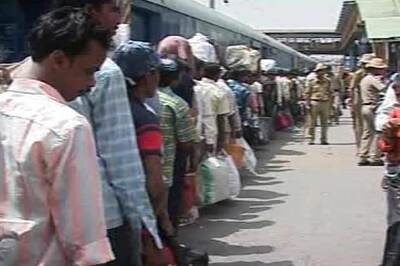
views
BEIJING China’s factory output rose just under 5% last month from a year earlier while retail sales fell slightly, suggesting the country’s recovery from the coronavirus pandemic remains muted.
The data reported on Friday show that despite a rebound in Chinese exports, overall domestic demand in the world’s second-largest economy remains lackluster.
Massive flooding across much of the south of the country also has hurt both production and consumer demand, though it pushed food prices sharply higher. Pork prices jumped nearly 86%, the report said.
Such idiosyncrasies” don’t fully account for the prolonged weakness in consumer spending, said Stephen Innes of AxiCorp.
Still, the glaring concerns around retail demand continue to speak volumes that its going to take more than stimulus and deep discounts on luxury products to get people shopping again,” he said in a report.
The 4.8% increase in industrial output from a year earlier was on a par with the month before and slightly below forecasts of just over 5%.
China, where the pandemic began in December, was the first economy to start the struggle to revive normal business activity in March after declaring the virus under control. Manufacturing is recovering, but consumer spending is weak.
Many Chinese either lost their jobs or some income, or are are worried they might.
The National Bureau of Statistics said that overall, China created 6.7 million jobs, nearly 2 million fewer than would normally be expected.
The trends show a steady recovery,” said bureau spokesperson Fu Linghui.
Still, there were signs of improvement in investment in factories and construction, which fell 1.6% in January to July, compared with a 3.1% contraction in the first half of the year.
Friday’s data release came just before Chinese and U.S. officials are due to hold online talks about progress on a phase one trade agreement set in January that brought a truce in a tariff war between the two biggest economies.
Relations have worsened despite that deal, as the two sides spar over abuses in the northwestern region of Xinjiang, developments in Hong Kong and technology disputes, among other issues.
Disclaimer: This post has been auto-published from an agency feed without any modifications to the text and has not been reviewed by an editor



















Comments
0 comment